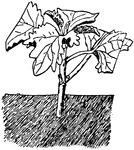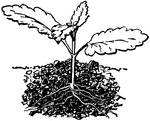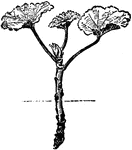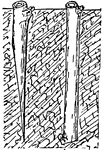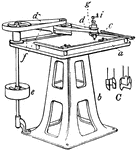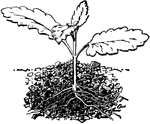Clipart tagged: ‘cutting’

Band Resaw
A resaw is a large band saw optimized for cutting timber along the grain to reduce larger sections into…

Cleft Grafting
Grafting is a horticultural operation which consists in placing together the two cut surfaces of different…

Coal-cutting Machine
"This machine consists essentially of a horizontal piston and cylinder engine fixed upon a platform…

Crown Grafting
Grafting is a horticultural operation which consists in placing together the two cut surfaces of different…

Cutting Pot
"A special contrivance for a cutting pot was brought into notice many years ago by Mr. A. Forsyth. A…

Epicycloidal Teeth
"Epicycloidal teeth, teeth for gearing cut in the form of an epicycloid." -Whitney, 1911

Types of Files
"Files. a, cotter-file when large, and verge- or pivot-file when small; b, square file (parallel or…
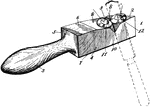
Combined Knife and Scissors Glass Cutter
This is a combination tool featuring a glass cutter and knife. A glass cutter is a hand tool which aids…

In-Arching (Grafting)
Grafting is a horticultural operation which consists in placing together the two cut surfaces of different…

Inlaying (Grafting)
Grafting is a horticultural operation which consists in placing together the two cut surfaces of different…
Front View of a Kitchen Bread Knife
Bread knifes can be made out of several different materials, This knife is apparently made from metal…

Fruit Knife
tool or implement for cutting. Knives form the largest class of cutting implements known collectively…
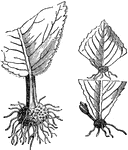
Leaf Cuttings
"Many plans may be propagated by planting their leaves or portions of their leaves as cuttings, as,…
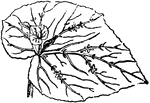
Leaf Cuttings
"Many plans may be propagated by planting their leaves or portions of their leaves as cuttings, as,…
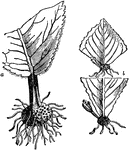
Leaf Cuttings
Plant propagation is the process of artificially or naturally distributing plants. Pictured here is…
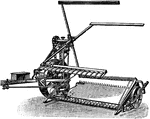
Reaping Machine
A machine for cutting down standing grain, usually worked by a pair of horses, the cutting machinery…

Propagation by Cuttings
Plant propagation is the process of artificially or naturally distributing plants. Pictured here is…

Purchase Shears for Cutting Metal
A tool used for cutting metals. "a and c, levers connected by a link bar b, and respectively pivoted…
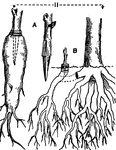
Root Grafting
Grafting is a horticultural operation which consists in placing together the two cut surfaces of different…
Saddle Grafting
Grafting is a horticultural operation which consists in placing together the two cut surfaces of different…
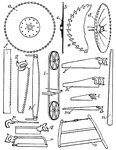
Collection of Saws
This illustration includes numerous types of saws: a. Circular saw (right-hand and left-hand saws have…

Screw-Cutting
"A self-acting screw-cutting lathe with double-geared headstock, of a type now well established, the…
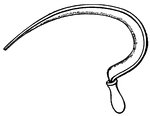
Sickle with Serrated Edge
"A reaping hook; a curved blade of steel (anciently also of bronze) having the edge on the inner side…
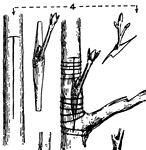
Side Grafting
Grafting is a horticultural operation which consists in placing together the two cut surfaces of different…

Single Eye
"This mode of propagation is performed by cutting the branches into short lengths, each containing one…

Spades - a Collection of Various Types
"A tool for digging and cutting the ground, having a rather thick iron blade, usually flat, so formed…

Neolithic Implements Stone Tranchet
Stone tranchet Neolithic age implement used for cutting. Not drawn to scale.

Terminal Herbaceous Grafting
Grafting is a horticultural operation which consists in placing together the two cut surfaces of different…

Veneering (Grafting)
Grafting is a horticultural operation which consists in placing together the two cut surfaces of different…
Wedge Grafting
Grafting is a horticultural operation which consists in placing together the two cut surfaces of different…
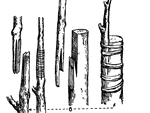
Whip Grafting
Grafting is a horticultural operation which consists in placing together the two cut surfaces of different…


